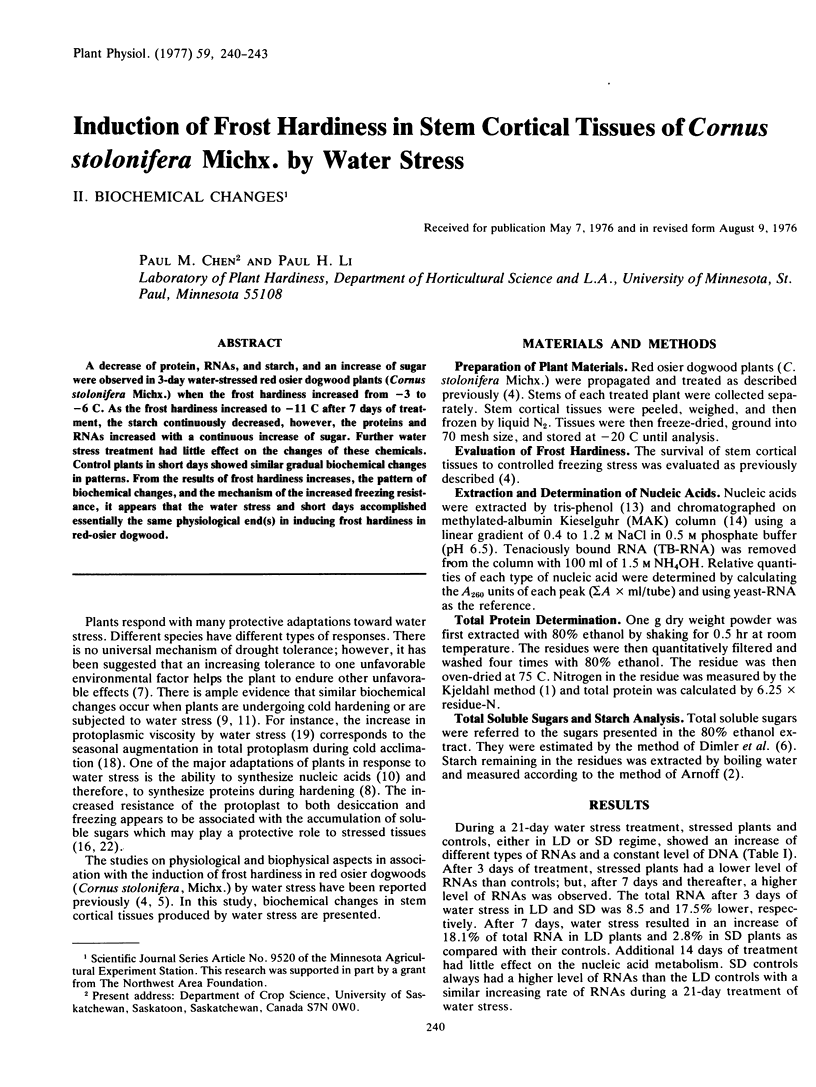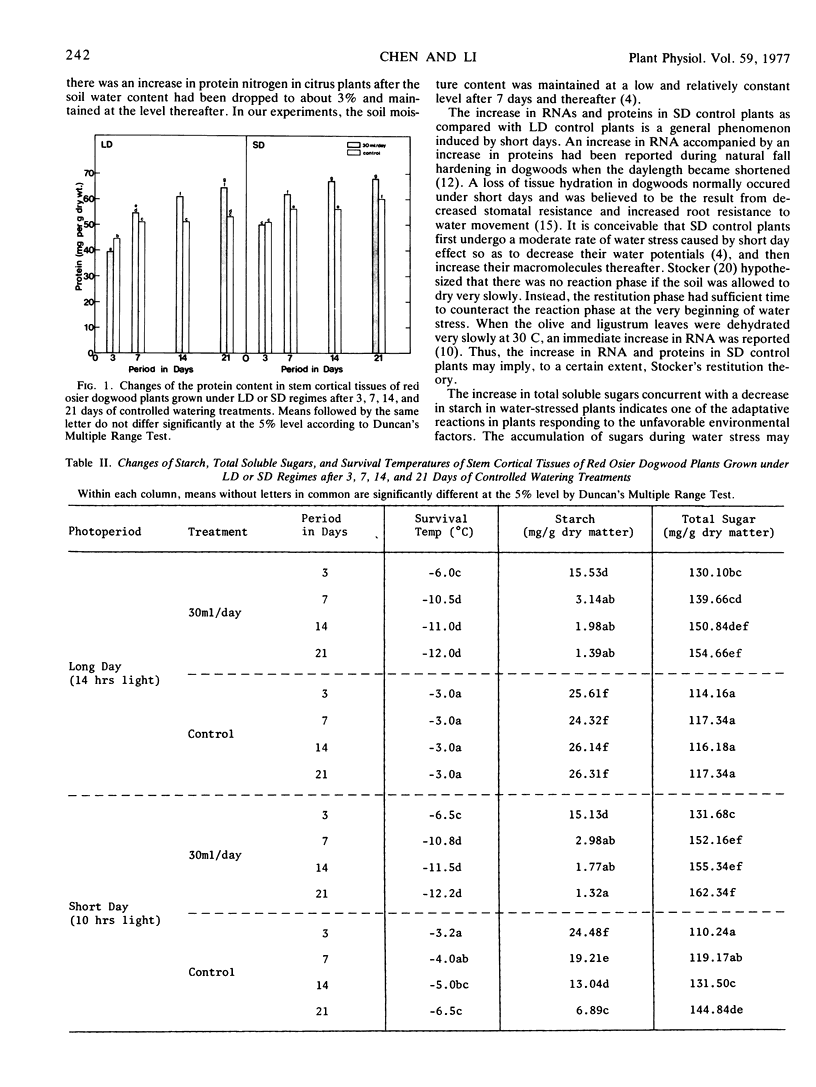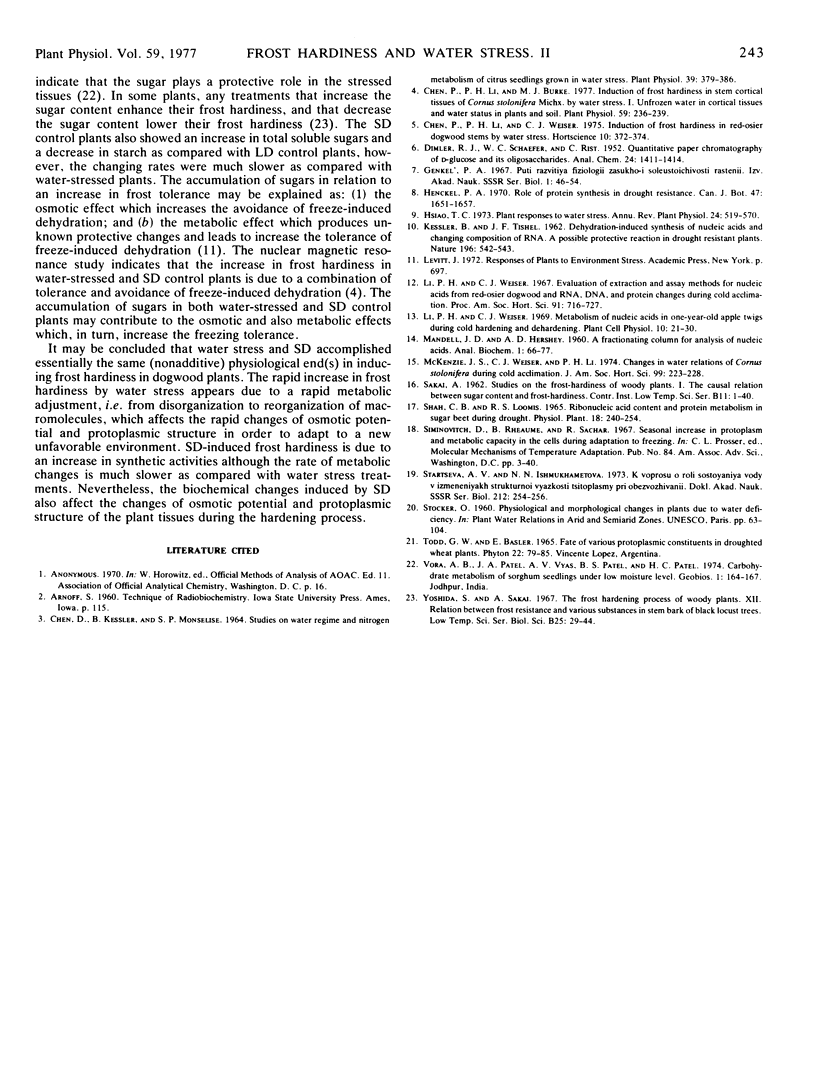Abstract
A decrease of protein, RNAs, and starch, and an increase of sugar were observed in 3-day water-stressed red osier dogwood plants (Cornus stolonifera Michx.) when the frost hardiness increased from −3 to −6 C. As the frost hardiness increased to −11 C after 7 days of treatment, the starch continuously decreased, however, the proteins and RNAs increased with a continuous increase of sugar. Further water stress treatment had little effect on the changes of these chemicals. Control plants in short days showed similar gradual biochemical changes in patterns. From the results of frost hardiness increases, the pattern of biochemical changes, and the mechanism of the increased freezing resistance, it appears that the water stress and short days accomplished essentially the same physiological end(s) in inducing frost hardiness in red-osier dogwood.
Full text
PDF



Selected References
These references are in PubMed. This may not be the complete list of references from this article.
- Chen D., Kessler B. Studies on Water Regime and Nitrogen Metabolism of Citrus Seedlings Grown under Water Stress. Plant Physiol. 1964 May;39(3):379–386. doi: 10.1104/pp.39.3.379. [DOI] [PMC free article] [PubMed] [Google Scholar]
- Chen P. M., Li P. H., Burke M. J. Induction of Frost Hardiness in Stem Cortical Tissues of Cornus stolonifera Michx. by Water Stress: I. Unfrozen Water in Cortical Tissues and Water Status in Plants and Soil. Plant Physiol. 1977 Feb;59(2):236–239. doi: 10.1104/pp.59.2.236. [DOI] [PMC free article] [PubMed] [Google Scholar]
- MANDELL J. D., HERSHEY A. D. A fractionating column for analysis of nucleic acids. Anal Biochem. 1960 Jun;1:66–77. doi: 10.1016/0003-2697(60)90020-8. [DOI] [PubMed] [Google Scholar]


